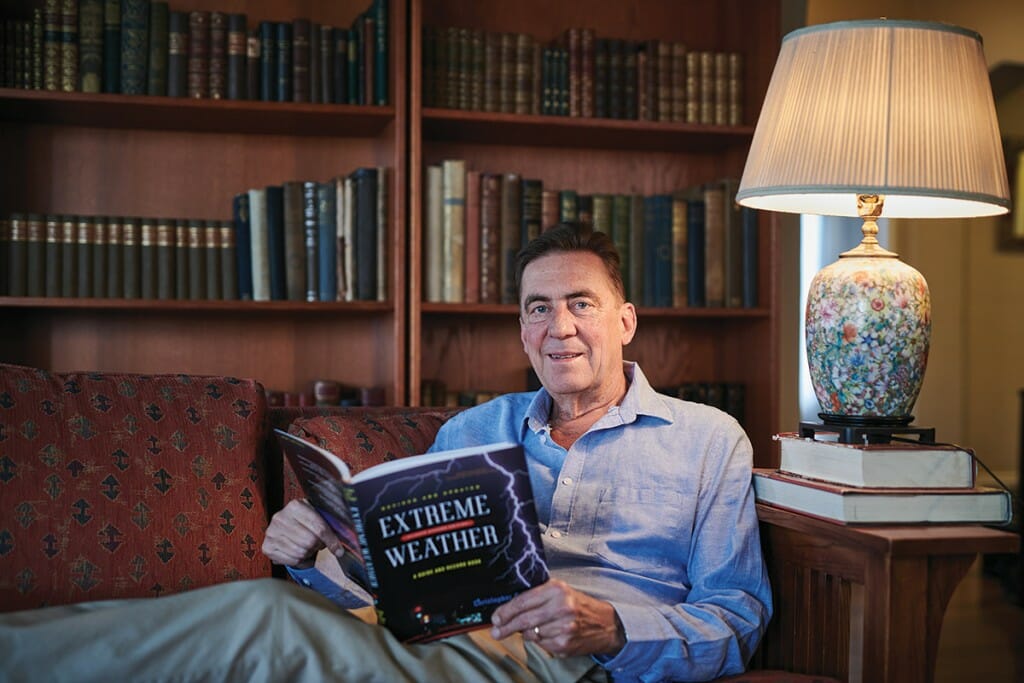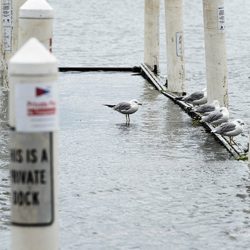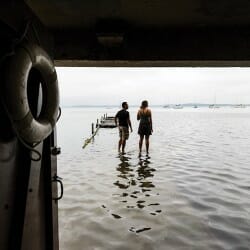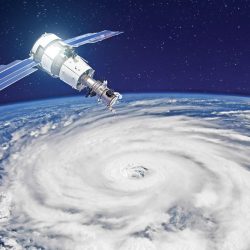Chris Burt ’83 was drawn to the UW in 1973 by its world-renowned meteorology department. Although he’d been studiously recording the weather since age six, at UW–Madison, his scholastic dreams stalled against the rigors of meteorological math. So he left school for a brief stint in farming and then toured Asia. Smitten by Thailand, he reenrolled at the UW in 1979 to earn a degree in international relations. After graduation, he entered the travel guide business in Bangkok just as Thailand became a popular tourist destination.
Burt jumped into the U.S. market with the Compass American guidebook series and sold that venture to Random House in 1992. He moved to the Bay Area and remained as publisher until 2001, when he reconnected to his weather enthusiasms. Burt created an extreme weather guide, working from a photocopied 1971 compendium of record-breaking weather compiled by one of his mentors. He updated the data and packaged it as Extreme Weather: A Guide and Record Book.
First enchanted by epic snowfalls, Burt’s passion now includes the outer limits of all climatic events. He survived Bangkok’s biggest rain event — 16 inches in 10 hours. “My house went underwater,” he recalls. “I remember sitting in my bedroom, and the house was literally shaking from the intensity of the rainfall.”
But that’s nothing: “I’d love to have been in Unionville, Maryland, when that one and a quarter inches of rain fell in 60 seconds,” Burt says of a record-holding 1956 storm. “I just can’t imagine what that would be like. That’s just ridiculous.”
The book helped launch him from meteorological dropout to a blogger at Weather Underground, a popular website for weather junkies. One of his blog posts even led to the World Meteorological Organization (WMO) overturning a 90-year-old statistic of the hottest temperature ever measured on Earth (136°F at El Azizia, Libya, in September 1922).
Burt’s investigation found critical flaws in how the heat was measured, prompting the WMO to conduct its own investigation and confirm his findings. The record fell by default to the 134°F observed in Death Valley, California, on July 10, 1913. The upset led to national media coverage and landed Burt an ad hoc membership on the WMO’s World Weather and Climate Extremes Committee.
“The increase of extreme weather events is definitely not our imagination,” Burt warns. “The heat waves are definitely as extreme as they have ever been in history and more frequent all over the world.”
Published in the Spring 2019 issue




Comments
No comments posted yet.